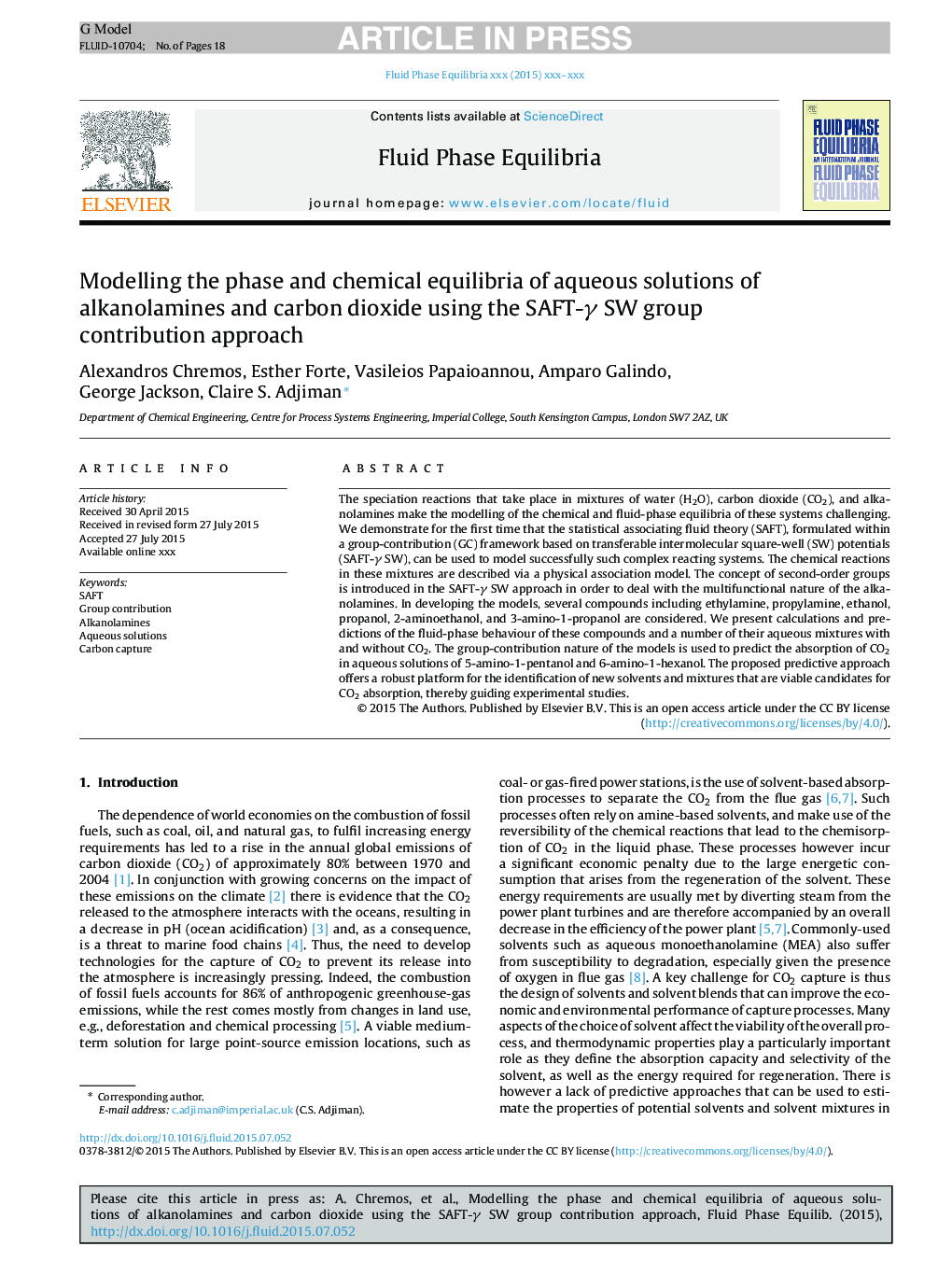| Article ID | Journal | Published Year | Pages | File Type |
|---|---|---|---|---|
| 6619611 | Fluid Phase Equilibria | 2016 | 18 Pages |
Abstract
The speciation reactions that take place in mixtures of water (H2O), carbon dioxide (CO2), and alkanolamines make the modelling of the chemical and fluid-phase equilibria of these systems challenging. We demonstrate for the first time that the statistical associating fluid theory (SAFT), formulated within a group-contribution (GC) framework based on transferable intermolecular square-well (SW) potentials (SAFT-γ SW), can be used to model successfully such complex reacting systems. The chemical reactions in these mixtures are described via a physical association model. The concept of second-order groups is introduced in the SAFT-γ SW approach in order to deal with the multifunctional nature of the alkanolamines. In developing the models, several compounds including ethylamine, propylamine, ethanol, propanol, 2-aminoethanol, and 3-amino-1-propanol are considered. We present calculations and predictions of the fluid-phase behaviour of these compounds and a number of their aqueous mixtures with and without CO2. The group-contribution nature of the models is used to predict the absorption of CO2 in aqueous solutions of 5-amino-1-pentanol and 6-amino-1-hexanol. The proposed predictive approach offers a robust platform for the identification of new solvents and mixtures that are viable candidates for CO2 absorption, thereby guiding experimental studies.
Related Topics
Physical Sciences and Engineering
Chemical Engineering
Chemical Engineering (General)
Authors
Alexandros Chremos, Esther Forte, Vasileios Papaioannou, Amparo Galindo, George Jackson, Claire S. Adjiman,
